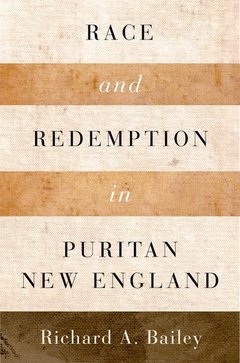Description
Race and Redemption in Puritan New England
Religion in America Series
Author: Bailey Richard A.
Language: English
Publication date: 05-2011
224 p. · 23.6x16.3 cm · Hardback
224 p. · 23.6x16.3 cm · Hardback
Description
/li>Contents
/li>Biography
/li>
Although puritans in 17th-century New England lived alongside both Native Americans and Africans, the white New Englanders imagined their neighbors as something culturally and intellectually distinct from themselves. Legally and practically, they saw people of color as simultaneously human and less than human, things to be owned. Yet all of these people remained New Englanders, regardless of the color of their skin, and this posed a problem for puritans. In order to fulfill John Winthrop's dream of a "city on a hill," New England's churches needed to contain all New Englanders. To deal with this problem, white New Englanders generally turned to familiar theological constructs to redeem not only themselves and their actions (including their participation in race-based slavery) but also to redeem the colonies' Africans and Native Americans. Richard A. Bailey draws on diaries, letters, sermons, court documents, newspapers, church records, and theological writings to tell the story of the religious and racial tensions in puritan New England.
Introduction: "Neither Bond Nor Free": New Englanders, Race, and Redemption. 1. Laying the Foundation for "a Citty upon a Hill": Faith, Works, Covenant, and Colonialism. 2. When Image Unmakes the Man: The Consequences of Thinking about the Colors and Capabilities of "Others". 3. "I am come into the light: Confessions of Faith, Sermons, and Ventriloquism. 4. "We are not to make Asses of our Servants": Exercising Authority over New Englanders of Color. 5. "The art of coyning Christians": Redeeming Self and "Others" in Puritan New England. Epilogue: The Happy Day Refuses to Come.
Richard A. Bailey holds a Ph.D. in History from the University of Kentucky. He is Assistant Professor of History at Canisius College in Buffalo, New York.
© 2024 LAVOISIER S.A.S.




